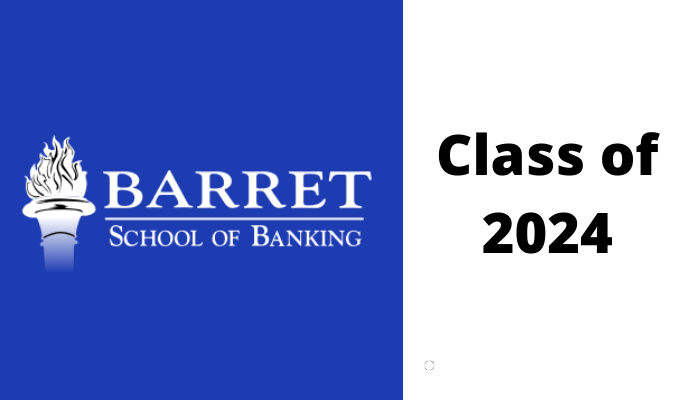[tabby title=”Year 1″]
Course Descriptions – First Year
Non-Traditional Financial Services (Home Study Assignment Required)
Focuses on the need for non-traditional financial services by examining margin pressure and competition from non-banks while trying to provide greater retention with current customers and faster growth opportunities.
Technology & E-Commerce
An overview of bank technology focusing on current technology trends, online financial services, system selection methodology, and network and Internet security issues.
Financial Statements (Home Study Assignment Required)
An introduction to the preparation and elementary analysis of financial statements, including a description of the accounting process, balance sheet and income statement preparation, and principles of small business accounting. Focus is on evaluating creditworthiness.
Human Behavior (Home Study Assignment Required)
A detailed examination of the psychological characteristics (e.g., attitudes, personality, and motivation) that influence the way we interact with our environment, including clients, peers, employees, and supervisors.
Developing a Sales Culture
Objectives include understanding the meaning of a “sales culture” and the factors affecting client relationships. Focuses on defining steps to developing a sales culture within a team and yourself.
Marketing & Business Development (Home Study Assignment Required)
An assessment of the competitive positions of your bank, and the ability to use that assessment to better position your bank for competitive advantage and increased profitability. The course is designed to be a useful problem-solving and decision-making discussion for marketing strategy and planning.
Regulatory Compliance & Documentation
A review of federal and state laws pertaining to consumer regulation, including Community Reinvestment Act, Truth in Lending, RESPA, Bank Secrecy Act, and Consumer Privacy.
Mortgage Portfolio Management
A study of mortgage lending practices and portfolio management with emphasis on real estate. An introduction to financing real estate, including types of property, sources of finance, direct and indirect commercial bank involvement, and loan packaging, including GNMA and FNMA.
[tabby title=”Year 2″]
Course Descriptions – Second Year
Commercial Lending (Home Study Assignment Required)
An in-depth analysis of the fundamentals of commercial real estate lending, including the major risks, important underwriting variables and how to understand key issues and differences among various property types. The concepts of sponsorship, loan monitoring, appraisals, and portfolio diversification are discussed.
Asset/Liability Management
An examination of the responsibilities of a bank’s Asset Liability Committee in the financial management of an institution. Issues to be discussed include capital management, liquidity and funding, pricing decisions, and interest rate risk management.
Bank Performance Management/Strategic Planning (Home Study Assignment Required)
A study of bank performance analysis through discussions of bank performance goals and ratios along with ratios factors and avenues for improvement. Focuses largely on using the Uniform Bank Performance Report (UBPR) and CAMEL regulatory performance ratings. Includes implementing a strategic plan to maintain or improve performance levels.
The Business of Banking
A study of the business side of banking, including trends affecting the industry, the need to enhance shareholder value, the legal and regulatory concerns and other areas of similar importance.
Economic Environment of Banking (Home Study Assignment Required)
Macro- and micro-economic considerations that impact critical areas of the bank, including forecasting, product pricing, and understanding the importance of the economic base. Includes Federal Reserve System, monetary policy, and fiscal policy discussion.
Financial Institutions and Markets
An overview of monetary and fiscal policies and how they impact the economic environment affecting commercial banks. Additional focus on the theory of interest rates, how they are determined, and understanding their term structure.
Investment Portfolio Management
An overview of the investment portfolio pertaining to your bank’s financial structure. Course focuses on buying bonds, managing the overall portfolio, and reviewing policies and risk limits. Investment strategies and performance trends are also examined.
Personnel Management & Supervision (Home Study Assignment Required)
A study of areas of management and supervision of importance to banking personnel, with emphasis on employee engagement, motivation, effective communication, counseling, and problem solving.
[tabby title=”Year 3″]
Course Descriptions – Third Year
Marketing & Brand Management
A detailed examination of the current trends in bank marketing, branding, sales, product development, and service.
Balance Sheet Management
An overview introducing methods used to effectively manage the short and long-term funding needs of a financial institution, including capital planning and liquidity management strategies.
Loan Portfolio Management
An introduction to a risk focused framework for portfolio credit risk management incorporating an overview of the banking industry as a means to understanding priorities and industry culture while evaluating risk strategies and risk controls.
Risk Management
An overview providing a general understanding of the major categories of risks, including credit risks, liquidity risk, market risk, operational risk, legal risk, reputational risk, and securities risks. Examples of managing financial risks are emphasized.
Bank Simulation
An interactive computer bank management simulation game designed to provide experience in total bank management, including decision-making, analysis of environmental conditions, investment strategies, and group interaction.
Leadership Development for the Future
An analysis that utilizes a self-evaluation process to develop methods of top personal performance. This course will explore the 5 components of Emotional Intelligence and their impact on the world of leadership in banking today. Stress is placed on self-awareness, self-regulation, motivation, sympathy, and social skill.
Bank Management: A How-To Guide
An informative and entertaining discussion of the various “secrets” to managing a successful financial institution.
Compliance Management
Understanding the management framework needed in the current banking environment as it pertains to regulatory compliance.
[tabbyending]







